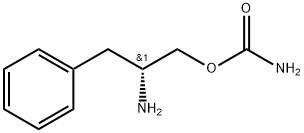How to synthesize Solriamfetol?
Jan 9,2024
Introduction
Solriamfetol (formerly known as JZP-110 and ADX-N05) is a selective dopamine and norepinephrine reuptake inhibitor that binds to dopamine and norepinephrine transporters in vitro at concentrations in the micromolar range, inhibiting reuptake without promoting the release of monoamines[1]. As a phenylalanine derivative, it is proposed to act as a dopamine and norepinephrine reuptake inhibitor. The USFDA approved it for excessive daytime sleepiness for patients with narcolepsy or obstructive sleep apnea. Solriamfetol is a phenylalanine derivative proposed as a dopamine and norepinephrine reuptake inhibitor.
Characteristic
The dual activity of solriamfetol is unique compared with other wake-promoting agents, and this drug presents a significant advantage compared with the current standard of care (modafinil or armodafinil), to which nearly half of patients with obstructive sleep apnea do not respond. Additional treatments include methylphenidate and amphetamines, though these options carry risks that include cardiovascular issues and the potential risk of abuse. Solriamfetol is distinguished from other wake-promoting agents by its dual reuptake inhibition at dopamine and norepinephrine transporters and is distinguished from amphetamine stimulants by its lack of release of monoamines[2].
Synthesis method

Glenmark recently disclosed a route that is likely more suitable for large-scale preparation of the API, which is outlined above, although the experimental procedures exemplified the synthesis on a gram scale using solvents that are likely to be replaced in a manufacturing setting (e.g., dichloromethane)[3]. The relatively simple structure of solriamfetol was accessed from D-phenylalanine methyl ester (1). Dissociation of the HCl salt and reduction of the ester provided amino alcohol 2. Carbamate formation to access 3 was achieved using sodium cyanate under acidic conditions. The HCl salt of solriamfetol was made by exposing the free base to HCl in a dichloromethane and ethyl acetate mixture.
References
[1] MB, Michael J. Thorpy et al. “A randomized study of solriamfetol for excessive sleepiness in narcolepsy.” Annals of Neurology 85 3 (2019): 359–370.
[2] T. Wong, Talha Memon. “1269 Off-Label Use of Solriamfetol In Idiopathic Hypersomnia.” Sleep (2020).
[3] Andrew C. Flick. “Synthetic Approaches to the New Drugs Approved during 2019.” Journal of Medicinal Chemistry 64 7 (2021): 3604–3657.
- Related articles
- Related Qustion
Mirogabalin besylate is a member of the gabapentinoid drug class, which includes gabapentin (Neurotin) and pregabalin (Lyrica).....
Jan 9,2024APIUbrogepant is a first-in-class oral calcitonin gene-related peptide (CGRP) receptor antagonist that Allergen developed under license from Merck & Co.....
Jan 9,2024APITafenoquine Succinate
178429-62-4You may like




